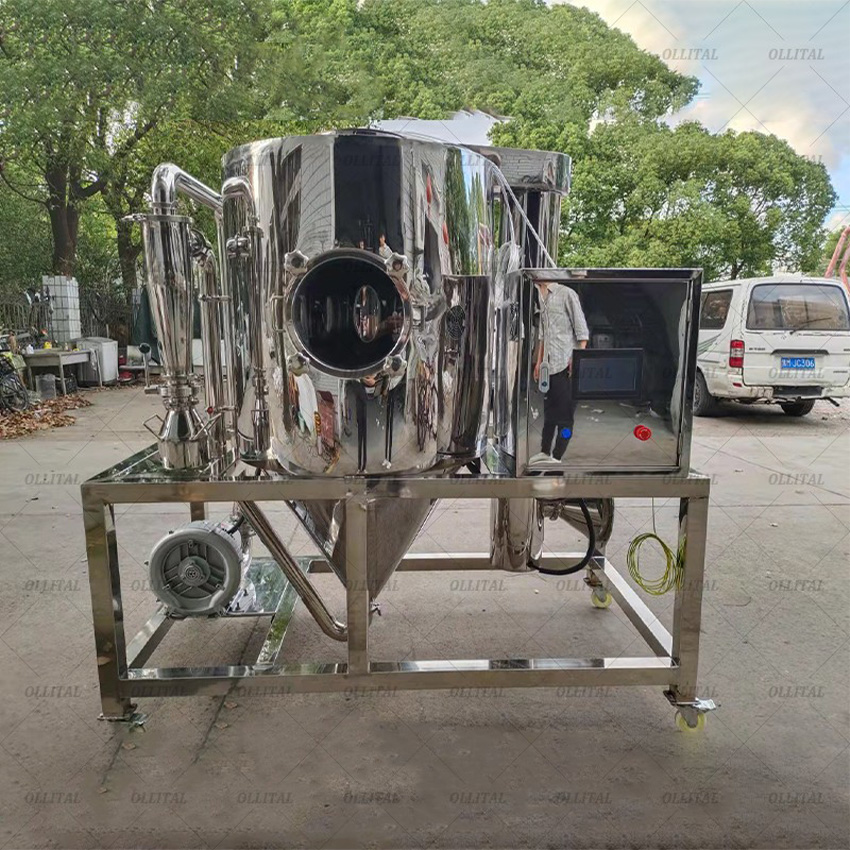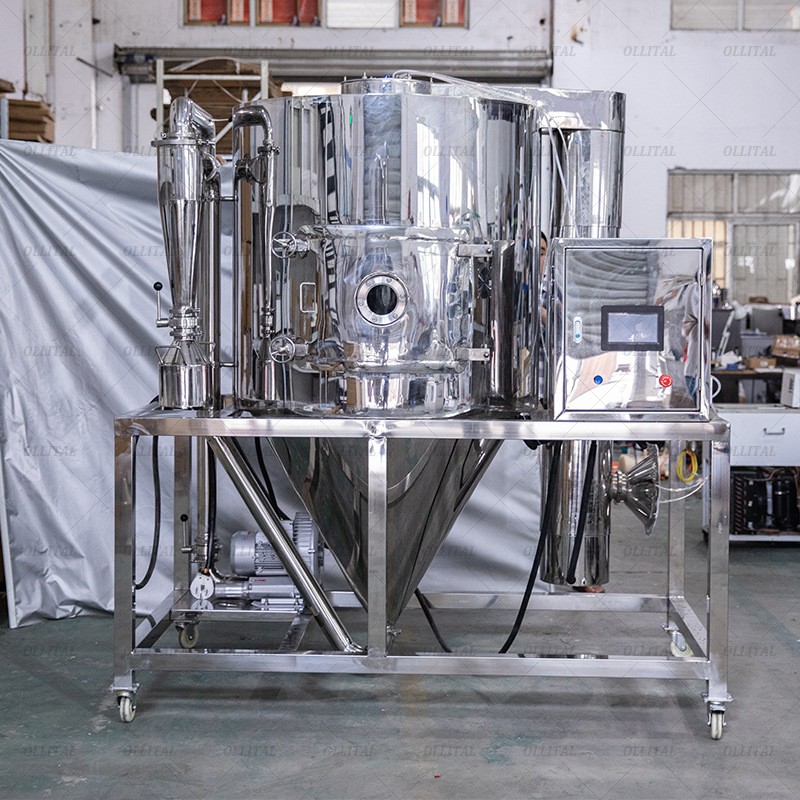Spray drying technology is one of the core processes of instant coffee production. It has the advantage of efficient and large-scale production by transforming liquid coffee extracts into powder products. The following is the detailed process and key technology analysis of spray dryer coffee production:
Basic process of spray dry coffee
1. Raw material pretreatment
Grind the roasted coffee beans into powder, extract soluble substances through high-temperature and high-pressure water, and form concentrated coffee liquid (usually with a solid content of 30% -55%). Some processes will use two-stage homogenization treatment (high-pressure homogenization+low-pressure homogenization) to improve the oil dispersion uniformity of coffee liquid and reduce flavor loss during subsequent drying processes.
2. Atomization stage
The coffee liquid is dispersed into tiny droplets of 10-200 microns through high-speed centrifugal atomizers (with a speed of up to 15000-30000 revolutions per minute) or pressure nozzles. The atomization effect directly affects the particle size and solubility of the powder, and uniform droplets can reduce particle agglomeration after drying.
3. Hot air drying
Hot air (with an inlet temperature of 150 ℃ -300 ℃) comes into contact with droplets in parallel or reverse flow, and the moisture evaporates 95% -98% within a few seconds, forming dry particles. At this stage, precise temperature and time control is required to avoid high temperatures causing oxidation or coking of coffee flavor compounds (such as volatile aromatic compounds).
4. Separation and Collection
The dried particles are collected by a cyclone separator or bag filter system, and the exhaust gas is discharged after dust removal. Modern equipment adopts tower wall blowing device and automatic cleaning function to reduce wall sticking phenomenon, and the recovery rate can reach over 99%.
Technical characteristics and optimization direction
1. Thermal sensitivity protection
The high temperature of traditional spray drying is easy to damage the coffee flavor, so the new equipment uses low temperature spray (inlet air temperature ≤ 80 ℃) or nitrogen closed circulation system to reduce the oxidation risk. For example, some pharmaceutical grade equipment can achieve a solvent recovery rate of up to 95% through inert gas protection.
2. Particle control technology
-Particle size control: by changing the diameter of the atomizing disc (0.5mm-2.0mm) or adjusting the spray pressure, the powder particles can be controlled within the range of 50nm-10 μ m to meet the requirements of different dissolution rates and taste.
-Anti stick wall design: The patented technology uses a rotatable cover and anti stick coating to reduce the coking problem caused by fog droplets hitting the tower wall and improve product purity.
3. Intelligent control
Modern equipment integrates PLC+touch screen control system, real-time monitoring of temperature, wind speed, atomization frequency and other parameters, supporting process data storage and traceability. Some laboratory models are also equipped with automatic needle cleaning function to prevent nozzle blockage.
Spray drying technology converts coffee liquid into instant powder through an efficient and controllable process. Despite the challenges of flavor retention, it still occupies the mainstream position in instant coffee production through low-temperature optimization, intelligent control and composite process innovation.

